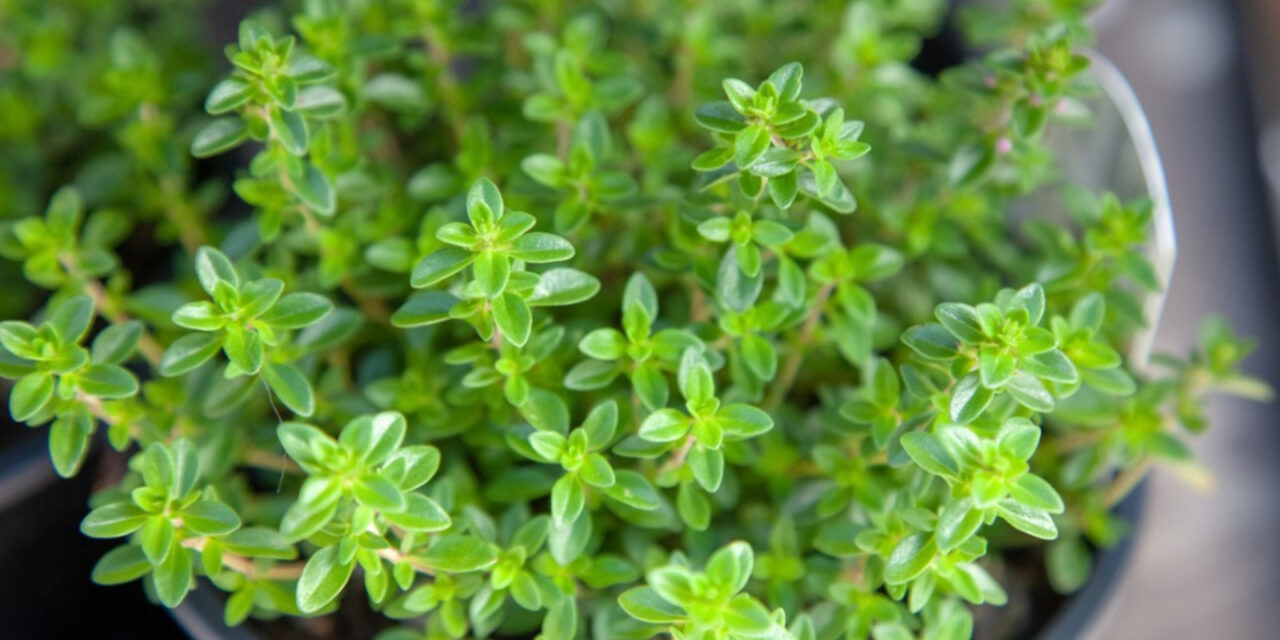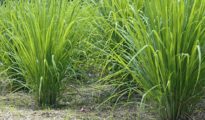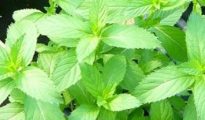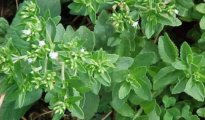Learn how to grow thyme indoors with this easy to follow DIY gardening guide and have your own thyme in no time! Thyme is a low-growing herb that is often used to add flavor to food. It is part of the mint family, and its leaves are similar in appearance to those of basil or oregano. Thyme is native to the Mediterranean region, and it has been used for culinary purposes for centuries. Today, it is one of the most popular herbs in the world, and it is used in a wide variety of dishes.
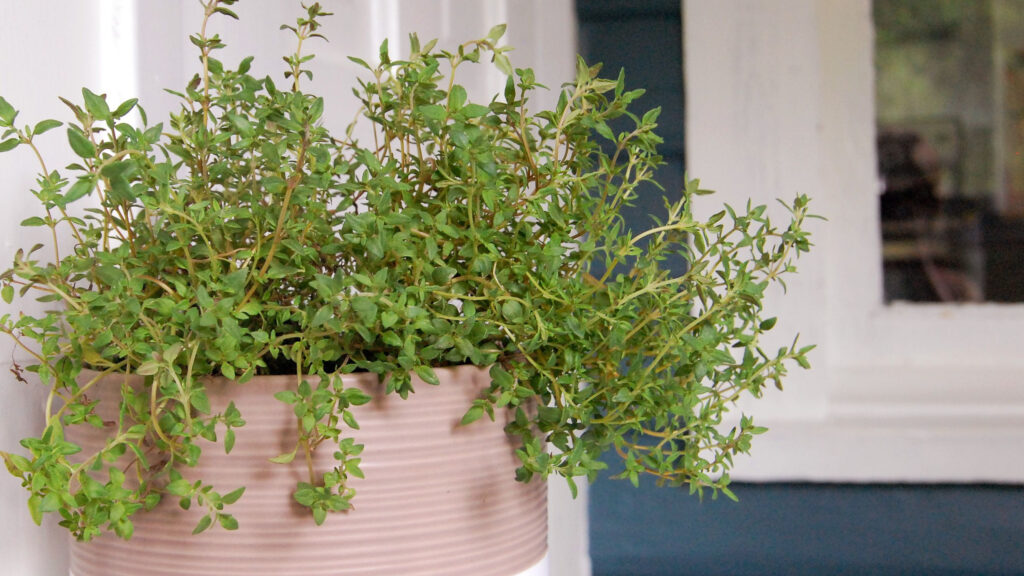
Thyme can be used fresh or dried, and it is available throughout the year. When cooking with thyme, it is important to remember that its flavor intensifies as it cooks, so it should be added at the end of the cooking process. Thyme can be used to flavor meats, vegetables, soups, and sauces. It is also a popular ingredient in herb blends such as bouquet garni and herbes de Provence. In addition to its culinary uses, thyme has also been traditionally used for medicinal purposes. It is thought to help with digestion and respiratory problems, and it has even been used as an antiseptic. Thyme essential oil can also be found in a number of cosmetics and skincare products.
How to Grow Thyme Indoors
Thyme is a perennial herb that is often used in cooking. It has a strong, pungent flavor that can enhance the taste of many dishes. Thyme can be grown indoors or outdoors. When growing thyme indoors, it is important to provide the plant with plenty of sunlight and well-drained soil. Thyme prefers a warm, sunny location and should be watered regularly. Indoor thyme plants can be started from seed, cuttings, or divisions. Once the plant is established, it will need to be trimmed periodically to prevent it from becoming leggy. When harvesting thyme, it is best to cut the stems in the morning after the dew has evaporated. This will help preserve the essential oils that give thyme its flavor. Fresh thyme can be used immediately or stored in the fridge for later use. Dried thyme can also be stored for long-term use.
How to Plant Thyme Indoors
When planting thyme, it's important to choose a sunny spot. Thyme needs at least six hours of sunlight per day in order to thrive. If you live in an area with hot summers, thyme will do best in a spot that offers some afternoon shade. Once you've selected the perfect spot, it's time to prepare the soil. Loosen the soil with a spade or hoe, and mix in some compost or organic matter. This will help the thyme roots take hold and establish themselves quickly.
Once the soil is ready, you can sow the thyme seeds indoors or directly outdoors. If you start them indoors, sow the seeds in small pots or seed trays filled with moistened potting mix. Keep the potting mix moist but not soggy, and place the pots in a sunny area, such as a south facing window sill or sunroom.
How to Care for Thyme Plants
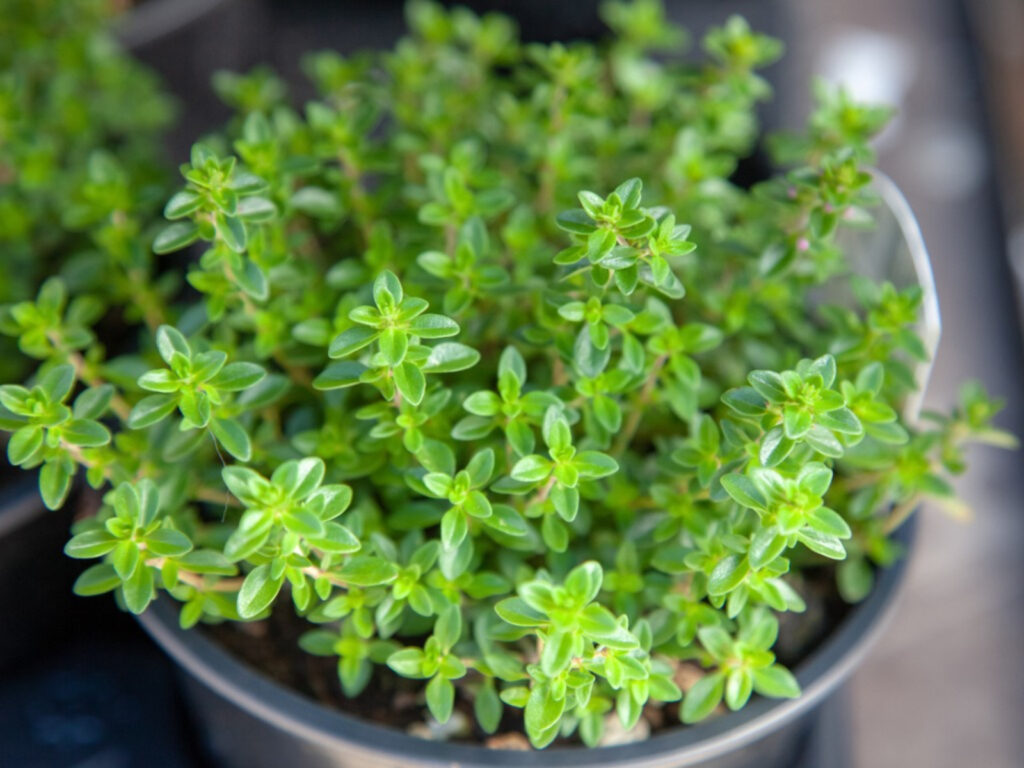
Caring for thyme is actually quite easy – once you have it growing, it is relatively low maintenance. That being said, there are a few things you can do to ensure that your thyme plant thrives. First, make sure to plant it in well-drained soil. Thyme does not like wet feet, so if the soil stays soggy, it will quickly succumb to root rot. Second, water thyme carefully. It is best to water early in the day so that the leaves have time to dry off before nightfall. This will help to prevent fungal diseases from taking hold. Finally, give thyme a light trimming every now and then to encourage bushy growth. With just a little bit of care, your thyme plant will thrive for years to come.
How to Dry Thyme
If you're lucky enough to have a bumper crop of thyme, or if you simply want to preserve some of this versatile herb for later use, drying is a great option. Thyme can be dried using a dehydrator, oven, or even air-drying. To dehydrate thyme, start by removing the leaves from the stems. Spread the leaves in a single layer on a dehydrator tray and set the temperature to between 95 and 115 degrees Fahrenheit. Dehydrate the thyme for 4-6 hours, or until the leaves are dry and crisp. If you don't have a dehydrator, you can also dry thyme in your oven. Simply preheat the oven to its lowest setting and spread the thyme leaves on a baking sheet lined with parchment paper. Bake for 1-2 hours, or until dry and crisp.
One final option for drying thyme is air-drying. This method takes longer than using a dehydrator or oven, but it's easy to do and doesn't require any special equipment. Start by bunching several stems of thyme together and tying them with string. Hang the bundle upside down in a cool, dark place (a pantry or cupboard works well) and allow it to dry. Now that you know how to grow thyme indoors, it's time to roll up your sleeves and get to planting!

